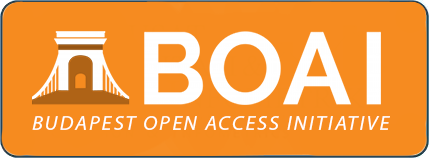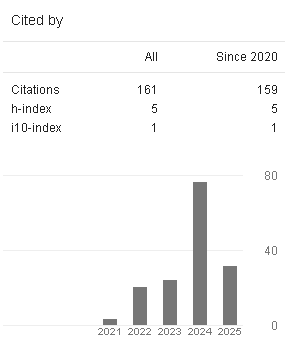Analisis Faktor Penerokaan Terhadap Penerimaan Kualiti Sistem E-Pembelajaran: Kajian Rintis
Exploratory Factor Analysis of E-Learning System Quality Acceptance: A Pilot Study
Keywords:
E-Pembelajaran, Faktor penerimaan, Analisis kebolehpercayaan, Analisis faktor penerokaan, E-Learning, Acceptance factor, Reliability analysis, Exploratory factor analysisAbstract
Sejak dunia dilanda pandemik Covid-19, e-pembelajaran telah menjadi suatu keperluan yang tidak dapat dielakkan. Kepentingan penggunaan sistem e-pembelajaran dalam pengajaran dapat dilihat dengan jelas seiring dengan kemajuan teknologi pada masa kini. Justeru itu, kajian ini bertujuan untuk membuat pengesahan terhadap instrumen faktor penerimaan kualiti sistem e-pembelajaran dalam kalangan pelajar Institusi Pengajian Tinggi (IPT) di Malaysia. Seramai 120 orang pelajar IPT awam dan IPT swasta terlibat sebagai responden dalam kajian ini. Bagi mendapatkan kesahan dan kebolehpercayaan instrumen, data dianalisis secara deskriptif menggunakan analisis kebolehpercayaan Alpha Cronbach dan analisis faktor penerokaan (EFA) dengan menggunakan perisian IBM SPSS. Dapatan kajian menunjukkan nilai Alpha Cronbach adalah melebihi nilai 0.70 bagi kesemua konstruk yang dikaji. Bagi analisis faktor penerokaan, keputusan menunjukkan nilai Kaiser-Meyer-Olkin (KMO) adalah melebihi 0.50 dan ujian Bartlett adalah signifikan. Tiada item yang disisihkan dalam kajian ini. Kesimpulannya, keseluruhan dapatan menunjukkan bahawa kelima-lima konstruk iaitu tanggapan kebergunaan (TK), tanggapan mudah guna (TMG), sokongan teknikal (ST), ciri-ciri pensyarah (CP) dan penerimaan kualiti sistem e-pembelajaran (KS) dapat diukur dan menjawab objektif kajian.
Since the world was hit by the Covid-19 pandemic, e-learning has become an inevitable necessity. The importance of using the e-learning system in teaching can be seen in tandem with the technological advances of today. Therefore, this study aims to validate the instruments of acceptance factors of the quality of e-learning systems among students of Institutions of Higher Learning (IPT) in Malaysia. A total of 120 public and private Institutions of Higher Learning students were involved as respondents in this study. To the validity and reliability of the instrument, the data is descriptively analyzed using Alpha Cronbach reliability analysis and exploratory factor analysis (EFA) using IBM SPSS software. The findings of the study show that the value of Alpha Cronbach exceeded the value of 0.70 for all constructs studied. As for the analysis of exploratory factors, the results showed the value of Kaiser-Meyer-Olkin (KMO) was above 0.50 and the Bartlett test was significant. None of the items was neglected in the study. In conclusion, the overall findings showed that all five constructs, namely the notion of usefulness (TK), easy-to-use responses (TMG), technical support (ST), lecturer characteristics (CP) and the acceptance of the quality of the e-learning system (KS) could be measured and answered the objectives of the study.
Downloads
References
Al-Ghazali. (2012). Minhajul ‘Ābidīn (Terj. Abdul Hiyadh). Surabaya: Mutiara Ilmu.
Alkhawaja, M. I., Sobihah, M., & Awang, Z. (2020). Exploring and developing an instrument for measuring system quality construct in the context of e-learning. International Journal of Academic Research in Business and Social Sciences, 10(11), 403–413. https://doi.org/10.6007/IJARBSS/v10-i11/7953
Arshad, N. M., Hassan, Z., & Mohd Noh, S. H. (2021). Faktor-faktor yang mempengaruhi penerimaan e-pembelajaran dalam kalangan pelajar di Politeknik Port Dickson: Kajian kes Semester 4 Diploma Kejuruteraan Mekanikal Pembuatan. International Journal of Humanities Technology and Civilization (IJHTC), 10(1), 107–123.
Aziz, F. A. (2002, September). Memanfaatkan sumber-sumber percuma internet dan WWW untuk pendidikan. Kertas kerja dibentangkan dalam Seminar Teknologi Maklumat dan Komunikasi 2002, Maktab Perguruan Batu Lintang (MPBL), Kuching, Sarawak. (Tidak diterbitkan)
Bing, W. A., & Jamaludin, K. A. (2021). Pembelajaran dalam talian (e-pembelajaran) semasa pandemik COVID-19. Jurnal Dunia Pendidikan, 3(3), 408–414.
Calisir, F., Altin Gumussoy, C., Bayraktaroglu, A. E., & Karaali, D. (2014). Predicting the intention to use a web-based learning system: Perceived content quality, anxiety, perceived system quality, image, and the technology acceptance model. Human Factors and Ergonomics in Manufacturing, 24(5), 515–531. https://doi.org/10.1002/hfm.20548
Ghavifekr, S., & Mahmood, H. (2017). Factors affecting use of e-learning platform (SPeCTRUM) among university students in Malaysia. Education and Information Technologies, 22(1), 75–100. https://doi.org/10.1007/s10639-015-9435-z
Hair, J. F., Black, W. C., & Babin, B. J. (2010). Multivariate data analysis: A global perspective. Pearson Prentice Hall.
Hair, J. F., Hult, G. T. M., Ringle, C. M., & Sarstedt, M. (2017). A primer on partial least squares structural equation modeling (2nd ed.). Thousand Oaks, CA: Sage.
Hashim, Y., Saleh, M. N., Daud, A. R., Gapor, A. L., Raoh, I., & Hamzah, M. (2008). Kajian tentang kompetensi pensyarah menggunakan teknologi pengajaran di sekolah berprestasi tinggi. Tanjong Malim: Universiti Pendidikan Sultan Idris.
Hussein, Z. (2017). Leading to intention: The role of attitude concerning technology acceptance model in e-learning. Procedia Computer Science, 105, 159–164. https://doi.org/10.1016/j.procs.2017.01.196
Ismail, J. (2002). The design of an e-learning system: Beyond the hype. The Internet and Higher Education, 4(3), 329–336.
Jaber, O. A. (2016). An examination of variables influencing the acceptance and usage of e-learning systems in Jordanian higher education institutions [Tesis kedoktoran, Cardiff Metropolitan University]. https://doi.org/10.25401/cardiffmet.20291391.v1
Jenal, M. Z. (2017, Mac). Persepsi pelajar terhadap penggunaan sistem rangkaian media sosial Telegram sebagai alat pembelajaran modul Matematik: Satu tinjauan kes di Kolej Komuniti Kuala Langat. Dalam eProceedings iCompEx17 Academic Paper (hlm. 1–9).
Krishnamurthy, S. (2020). The future of business education: A commentary in the shadow of the Covid-19 pandemic. Journal of Business Research, 117, 1–5. https://doi.org/10.1016/j.jbusres.2020.05.034
Kurniawan, R., Henderi, H., & Nursetianingsih, F. (2012). Penggunaan iPad mendukung pembelajaran pada mahasiswa iLearning. CCIT Journal, 6(1), 76–91.
Lim, J. L. (1996). e-Learning: A new frontier in education. Workforce, 1997(1998), 1999–2000.
Mohd Najib, H., Abu Bakar, N. R., & Othman, N. (2017). E-pembelajaran dalam kalangan pelajar di sebuah institusi pengajian tinggi Selangor: E-learning among students of higher education institutions in Selangor. ATTARBAWIY: Malaysian Online Journal of Education, 1(1), 74–82. https://doi.org/10.53840/attarbawiy.v1i1.121
Mohd Noor, N. E., Tengku Kasim, T. S. A., & Md. Yusoff, Y. (2021). Peranan guru dalam pelaksanaan e-pembelajaran Pendidikan Islam menurut perspektif Al-Ghazali: The role of teachers in the implementation of e-learning in Islamic education according to Al-Ghazali’s perspective. Journal of Islamic Educational Research, 6(1), 52–63. https://doi.org/10.22452/jier.vol6no2021.4
Naidu, S. (2006). E-learning: A guidebook of principles, procedures and practices (2nd rev. ed.). CEMCA.
Omar, R., & Ahmad, J. (2009). Kesedaran, penilaian dan penerimaan e-pembelajaran dalam kalangan ahli akademik. Jurnal Pendidikan Malaysia, 34(1), 155–172.
Pallant, J. (2020). SPSS survival manual: A step-by-step guide to data analysis using IBM SPSS (7th ed.). Routledge. https://doi.org/10.4324/9781003117452
Pamungkas, I. A., & Rofiq, N. N. (2014). Analisis dan perancangan aplikasi e-learning berbasis web pada Madrasah Ibtidaiyah. Jurnal Teknik Informatika, 22, 1–13.
Salam, A., & Mansur, A. (2025). MyGfL: A lifelong learning platform for Malaysian society. Electronic Journal of E-Learning, 4(1), 7–14. https://academic-publishing.org/index.php/ejel/article/view/1480
Shahaimi, S. & Khalid, F. (2015). Persekitaran pembelajaran maya Frog (VLE-FROG) di sekolah-sekolah di Malaysia: Pelaksanaan dan cabaran. Dalam Prosiding Seminar Kebangsaan Pendidikan Negara Kali Ke-5 (hlm. 28–38).
Surjono, H. D. (2015). The effects of multimedia and learning style on student achievement in online electronics course. Turkish Online Journal of Educational Technology, 14(1), 116–122.
Tabachnick, B. G., & Fidell, L. S. (2014). Using multivariate statistics (6th ed.). Pearson Education Limited.
Umbit, A. F., & Taat, M. S. (2016). Faktor-faktor yang mempengaruhi penerimaan e-pembelajaran dalam kalangan pelajar di institusi. Jurnal Penyelidikan IPGK, 13, 1–14.
Wilson, S., Liber, O., Johnson, M., Beauvoir, P., Sharples, P., & Milligan, C. (2009). Personal Learning Environments: Challenging the dominant design of educational systems. Journal of E-Learning and Knowledge Society, 3(2). https://doi.org/10.20368/1971-8829/247
Yahya, Y. (2006). Learning object recognition: Model a components establishment (Tesis PhD, Fakulti Teknologi dan Sains Maklumat, Universiti Kebangsaan Malaysia).
Yong, A. G., & Pearce, S. (2013). A beginner’s guide to factor analysis: Focusing on exploratory factor analysis. Tutorials in Quantitative Methods for Psychology, 9(2), 79–94.
Yusof, M. N. M., & Tahir, Z. (2017). Kepentingan penggunaan media sosial teknologi maklumat dalam pendidikan IPTA. e-BANGI, 12(3), 1–10.
Downloads
Published
How to Cite
Issue
Section
License
Copyright (c) 2022 RABBANICA - Journal of Revealed Knowledge

This work is licensed under a Creative Commons Attribution-NonCommercial 4.0 International License.












